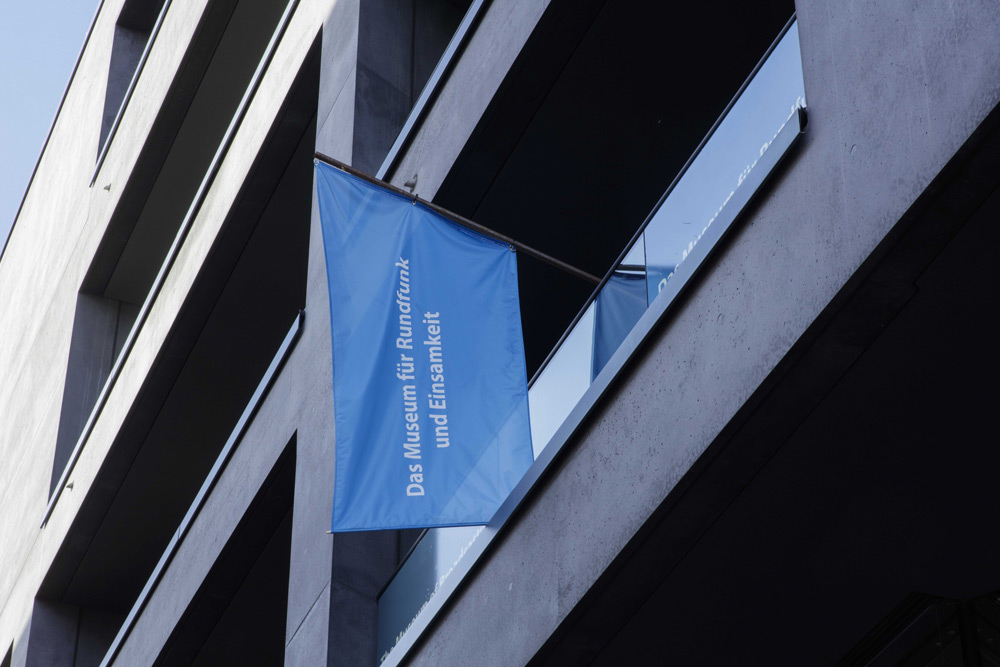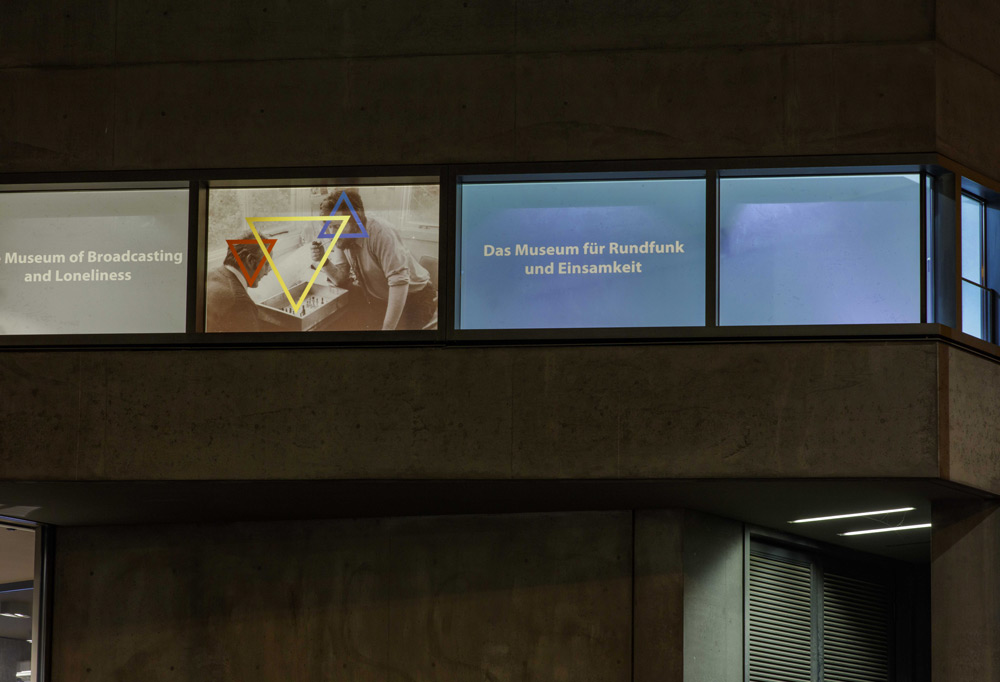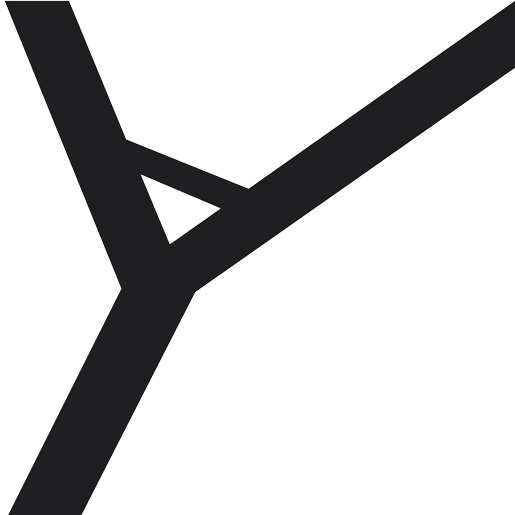Gill Gatfield, ALTER EGO






Gill Gatfield, The Muses, 2021
Duration: December 1, 2021 – April 9, 2022
Visible daily until midnight, 2nd floor opening hours: Wed. – Fri. 14-18 or by appointment
On the occasion of her first solo presentation in Berlin, Alter Ego, Aotearoa New Zealand born artist Gill Gatfield conceived a project in two chapters – a large scale crystal-glass sculpture and a public space virtual reality installation – which talk and expand towards the human being. Renowned for her minimal, conceptual and abstract sculptures, and for her inclusive public monuments, Gatfield’s project relates to the public, the architecture, structures and infrastructures of the city, the area of Berlin Mitte and the L40 building, home of the Kunstverein am Rosa-Luxemburg-Platz.
Inside the foyer of the L40, The Muses vibrate, float and emerge from the space and reverberate meanings. The installation centers the eye on three monumental glass figures, shining outward from halos of soft white shaded edges, lightly held to the ground by an over one-hundred year old pine timber beam. They are shaped as ‘I’, as pure ancestral forms, as deeply rooted and recognised syntagms, as totemic figures.
The sculptural elements – translucent glass planes, blackened timber and wall, measured space, fine lines and internal curves, create unexpected volume and speak about light and shadow, form and material, material as matter and language, ephemeral nuances and reflections. The language of the artist – her process, her system of references – takes shape into monochromatic transparent paradigms, suggesting fluidity and transitional moments in a realm located between sign, signifier and signified.
The Muses occupy a transient space yet they convey a transcript about form, shape, proportions and abstract figures that stand as guardians, protectors of meanings and visions. They tell stories through the material, stories that anchor on to the material itself and on the substance, the matter that constitutes the observable, the shadows and the light, as elements of a discursive approach. The Muses seem to decipher society’s paradigms through a magic lens by being, by echoing through phenomena. Hence the work is perceived as resolving complex, philosophical and sociological expressions by bending the matter and reasoning about atavistic shapes. Ultimately, The Muses reclaim our attention, enclose social and interactional paths, invite us to touch them, to feel, perceive them; they guide us through narrations whence we relate, they suggest an alternate path of intentionality, of meaning-making.
As the doors open on the second floor, the Siren awaits. The piece reveals itself in the form of an elongated ‘I’, red, crisp, bright. She stands as an Island, a siren who sings without sound and charms the eye, guarding our origin and destination coordinates.
Another ancestral form is to be seen in the sculpture Aroha (meaning love in Māori), a molten stone ‘X’, an emblematic shape, the witness of the process of connection, it marks a place, a message, anchored to the Earth’s core.
The second chapter of Gatfield’s Alter Ego lies beyond the L40 walls. Native Tongue XR is the extended reality alter ego of a sculpture carved from the heartwood of a giant tree buried in Aotearoa New Zealand before the last Ice Age. The analogue twin is a public artwork, a taonga (treasure), a totem steeped in its own place, another continent half a world away. The virtual reality sculpture, to be presented in the public green space between Almstadt- and Rosa-Luxemburg-Straße in mid-January, stands in simpatico with The Muses. It is a fourth I-figure, a sculptural volume described digitally in air, yet lifelike and perceivable, a spirit figure, proof of life, bringing the past into the present tense. Through the virtual rendering of Native Tongue XR, Gill Gatfield translates and transforms further her production, demonstrating her finesse of the artistic process, media and materials perception. At the threshold of reality and digital stimulation, the sensation of synaesthesia occurs, completing the Alter Ego journey into a multi-layered, poetic, philosophical world.
– Chiara Valci Mazzara
Gill Gatfield (1963) transforms ancient and futuristic materials and media into otherworldly abstract forms, sparking connections between nature, time, humanity and place. Her work has won international awards, commissions for place-making art, and is held in public and private collections in NZ, Australia, USA and Europe. International exhibitions include Sculpture by Sea Perth Australia 2021, VSC Alumx USA 2020, Venice Architecture Biennale 2018, A18 New York, Chicago Expo 2018, SCAPE Public Art 2017, and Sculpture by Sea Aarhus Denmark 2015. Gill Gatfield holds an MA(Hons) Auckland University. Awards and recognition include sole Juror, WomanMade International Open Chicago 2015, residency and solo exhibition Kvindemuseet/KØN Denmark 2015, international CODAaward 2017 Public Art Landscape Award, New Zealand Woman of Influence award 2018, Sculpture Fellowship and residency Vermont Studio Centre 2019, Creative NZ Art Grants 2019 and 2020, CODAworx Creative Revolutionary 2020.
Native Tongue XR supported by: Spark Foundation NZ and Creative New Zealand Toi Aotearoa
THE DAY AFTER TOMORROW
Sechs Fragen – 168 Antworten: 28 Künstler*innen wurden für das Projekt „THE DAY AFTER TOMORROW“ sechs gleiche Fragen zu ihrer Erfahrung mit der Corona-Pandemie gestellt. Das Ergebnis ist ein widersprüchliches Stimmungsbild, das Fragen aufwirft nach der prekären Situation der Bildenden Kunst angesichts der Pandemiere
18:00 h / Launch des Online-Projekts
18:30 h / Konzert des Art Critics Orchestra: im here und jazz
19:30 h / Panel mit Heidi Sill (bbk berlin), Harald Welzer (Soziologe), Andreas Templin, (Künstler) Moderation: Raimar Stange
THE DAY AFTER TOMORROW ist ein Projekt von Raimar Stange in Zusammenarbeit mit dem Kunstverein am Rosa-Luxemburg-Platz e.V. Koordination und mehr: Andreas Templin.
Das Projekt wurde gefördert durch StiftungKunstfonds / Neustart





THE DAY AFTER TOMORROW - Launch
THE DAY AFTER TOMORROW
Six questions – 168 answers: For the project 28 artists were asked six identical questions about their experiences during the Covid-pandemic. The result is an multifacetted representation of experiences and opinions which raises questions about the precarious situation of the visual arts in the face of the ongoing pandemic.
18:30 h / Art Critics Orchestra Concert: im here und jazz
19:30 h / Panel discussion with Heidi Sill (bbk berlin), Harald Welzer (sociologist), Andreas Templin, (artist) moderation: Raimar Stange
THE DAY AFTER TOMORROW is a project by Raimar Stange in collaboration with the Kunstverein am Rosa-Luxemburg-Platz e.V. Coordination and more: Andreas Templin.
The project is supported StiftungKunstfonds / Neustart.


Declan Clarke, Das Museum für Rundfunk und Einsamkeit / The Museum of Broadcasting and Loneliness
Broadcast 8: The Last Broadcast
Broadcast 7: A Faltering Transmission
Broadcast 6: The Domestication of Listening
Broadcast 5: The Undulating Waves That Overwhelm Us
Broadcast 4: Attempting to Survive Our Time
Broadcast 3: The Museum of the Air
Broadcast 2: From Harbour to Heart´s Content
Broadcast 1: The End of Loneliness
Die Installation wird täglich ab 16h beleuchtet und ist frei zugänglich.
Das Museum muss leider weiterhin geschlossen bleiben. Darum wird während der Laufzeit der Ausstellung eine Reihe von Kurzfilmen veröffentlicht, mit denen wir jeweils Freitags auf Sendung gehen. Die vom Künstler im Wochenrythmus neu produzierten Filme vermitteln jeweils unterschiedliche Inhalte und Themen aus dem Museum für Rundfunk und Einsamkeit.





Das derzeit geschlossenen Museum für Rundfunk und Einsamkeit führt mit seinem Programm ein in die Geschichte der elektronischen Kommunikation. Das Projekt kehrt dafür zu den Anfängen der elektronischen Massenkommunikation zurück und erzählt eine vielschichtige, komplexe Geschichte von Transition und Transmission, von überraschenden Zusammenhängen und gewissen historischen Parallelen zwischen einem geteilten Irland und einem gleichermaßen getrennten Deutschland. Das Projekt versteht sich als Prequel zur geplanten Ausstellung im nächsten Jahr. Bleiben Sie dran!
Declan Clarke *1974 Dublin, lebt und arbeitet in Berlin
The installation is illuminated every day from 4pm. It is freely accessible.
Unhappily the museum has to stay closed. A series of short films will be released throughout the duration of the exhibition, each new ‚broadcast‘ arriving every Friday on this website. The films newly produced by the artist every week will relate to the content and convey the thematics of The Museum of Broadcasting and Loneliness.
The currently closed Museum for Broadcasting and Loneliness introduces the history of electronic communication with its program. The project returns to the beginnings of electronic mass communication and tells a multi-layered, complex story of transition and transmission, of surprising connections and certain historical parallels between a divided Ireland and an equally separated Germany. The project sees itself as a prequel to the exhibition planned for next year. Stay tuned!
Declan Clarke *1974 Dublin, lives and works in Berlin

